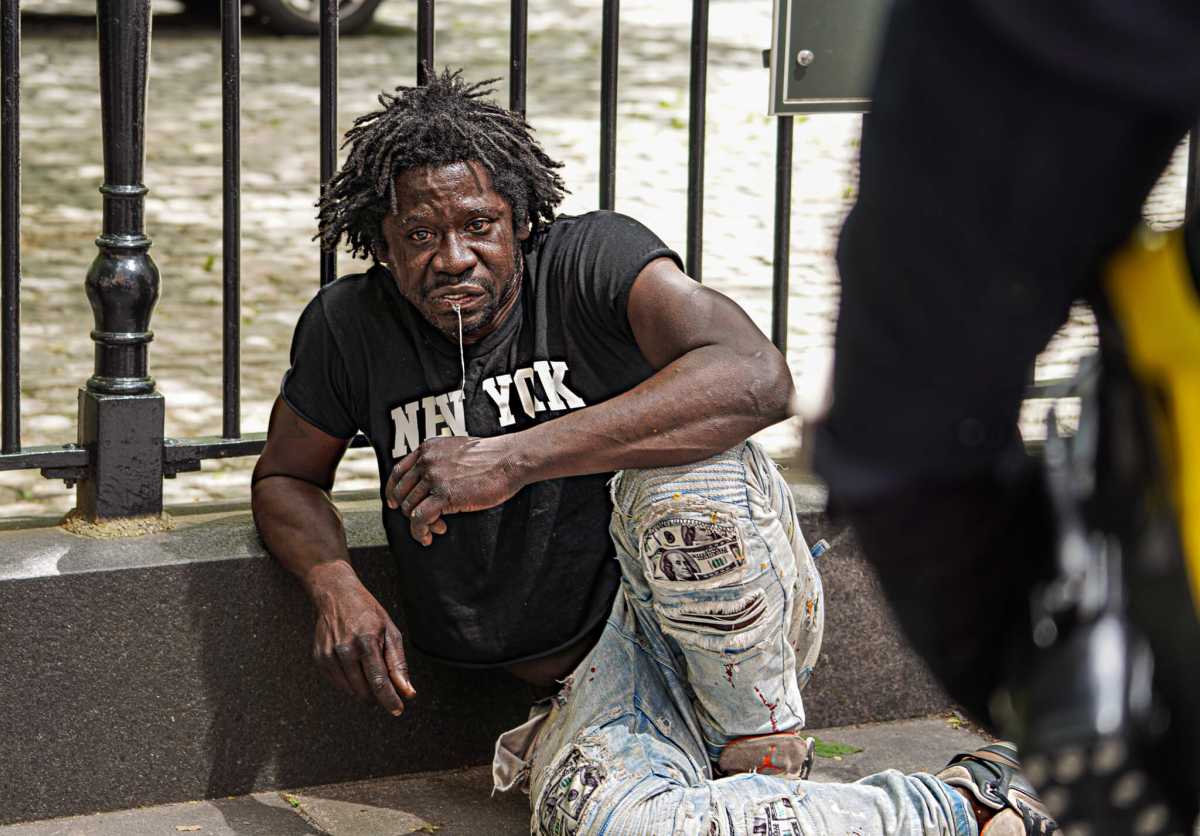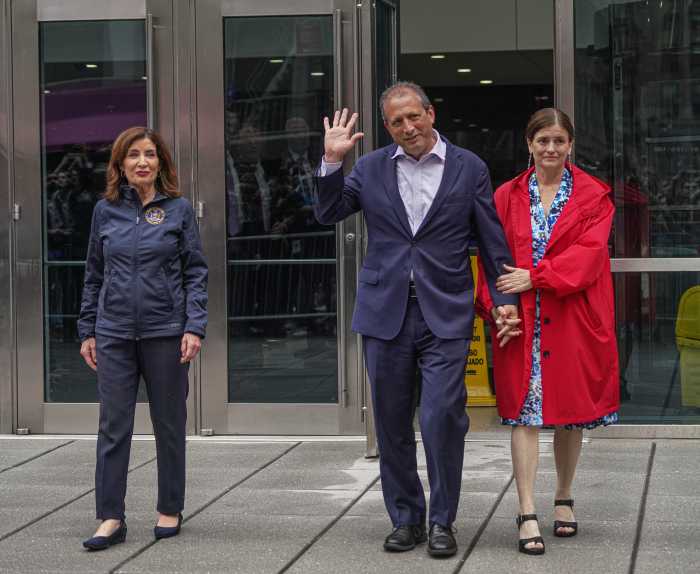As the city continues to collectively decry the killing of Jordan Neely aboard a Manhattan F train last week, advocates say the suffering of the city’s unhoused population has only become more apparent.
Neely, a 30-year-old Black, mentally ill, homeless man, was reportedly screaming at passengers on the afternoon of May 1 when he was subdued in a chokehold by a fellow passenger, 24-year-old Daniel Penny, a white former Marine from Long Island. His death has since prompted those who have experienced homelessness firsthand to speak out against the invisibility of the city’s most vulnerable population within the Big Apple’s class hierarchy.
Few cities in the United States infuse extreme poverty with extreme wealth like that in New York — a perverse melting pot that those directly impacted say have made its residents too comfortable with the suffering of the unhoused and drug-dependent. From individuals sleeping on subway train cars to the people overdosing on city streets in broad daylight without so much as a second look from passersby, homeless survivors are seeking a cultural reset when it comes to the way in which the undomiciled are viewed and treated by the rest of society.
Mere days before Neely lost his life, another Black homeless man could be observed drooling and pleading for aid outside of City Hall. While public drug abuse or intoxication can be seen as a figurative cry for help, advocates say the state of mental health and service support has grown so dire that the tradition of suffering in silence is starting to be bucked.
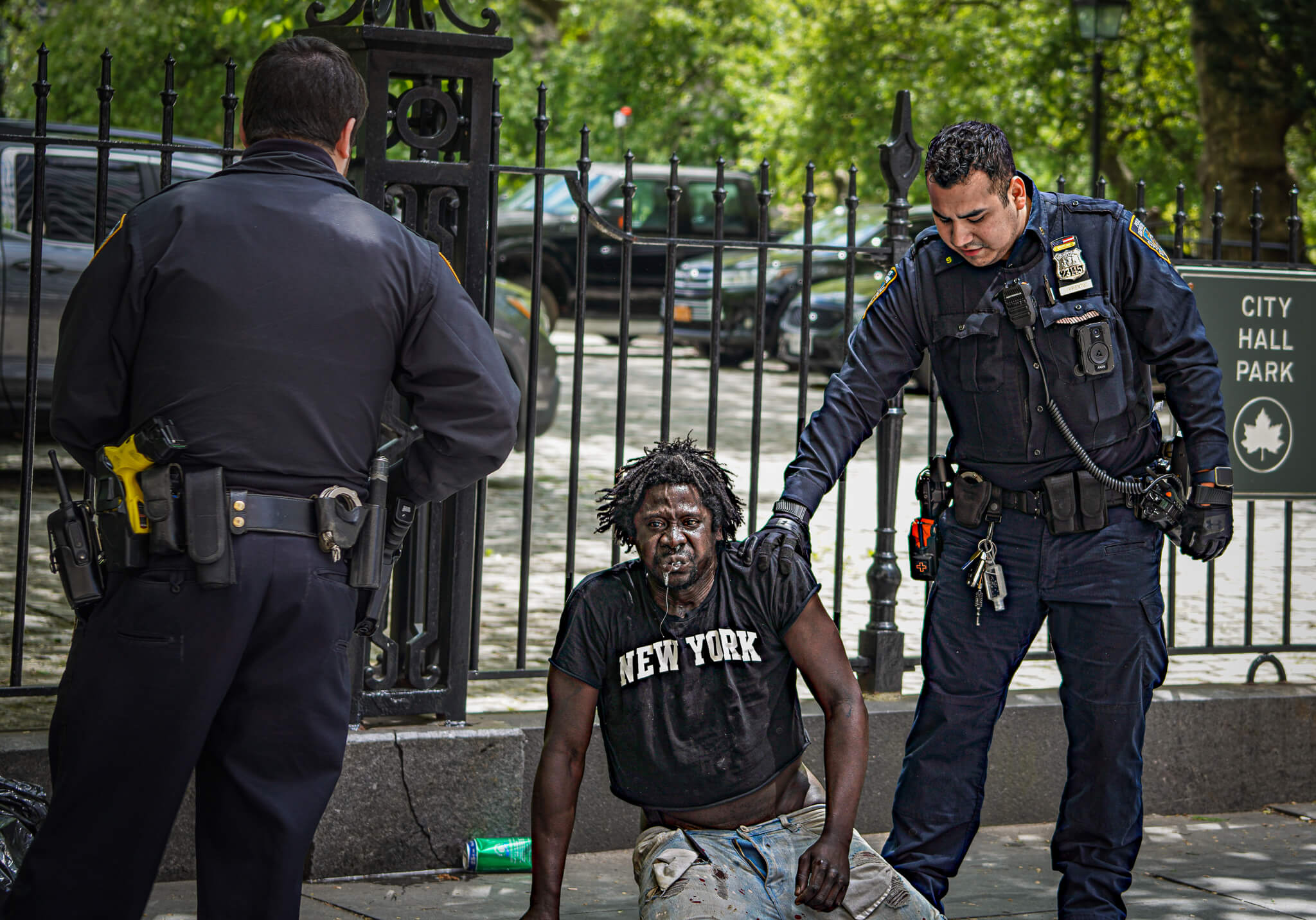
“Please! Please! Please!” He cried repeatedly as passersby went on their way.
According to a police officer on the scene, the man reportedly had issues breathing. Several responding cops radioed for an ambulance and stayed with the man until help arrived. However, with many homeless individuals — especially those of color — seemingly invisible to the public eye, not everyone in need is always so lucky.
Johnny Grima has experienced street homelessness himself and was even arrested several times when Mayor Eric Adams first initiated encampment removal. He also witnessed the Neely’s killing — something he says will scar him for the rest of his life.
Grima spoke with amNewYork Metro on the personal impact of living on the street, including the negative effects being ignored by society can have on one’s mental wellbeing.
“Even if a poor or middle-class income person wanted to help a homeless person their influence is limited to small relief efforts, like giving food and clothing, they can’t give a home because they don’t have the money or vacant property,” he said. “They can try and reach out through 311 but that doesn’t help. The person who actually can help the homeless person the most is the landlord who has no intention of letting homeless people move into their properties, and the rich person who passes by the homeless person every day, the rich person that could buy a homeless person a house in another state or pay rent for their apartment. Wealthy residents of NYC would rather watch homeless people suffer and die every day in plain sight than spend their own money on housing them.”
Grima also placed blame on city landlords for letting housing lay vacant for unattainable prices.
“The landlords of NYC are holding onto hundreds of thousands of empty apartments they could use to save these people from the crisis,” he said. “Housing needs to change ownership from the hands of wealthy landlords to the hands of the homeless person.”
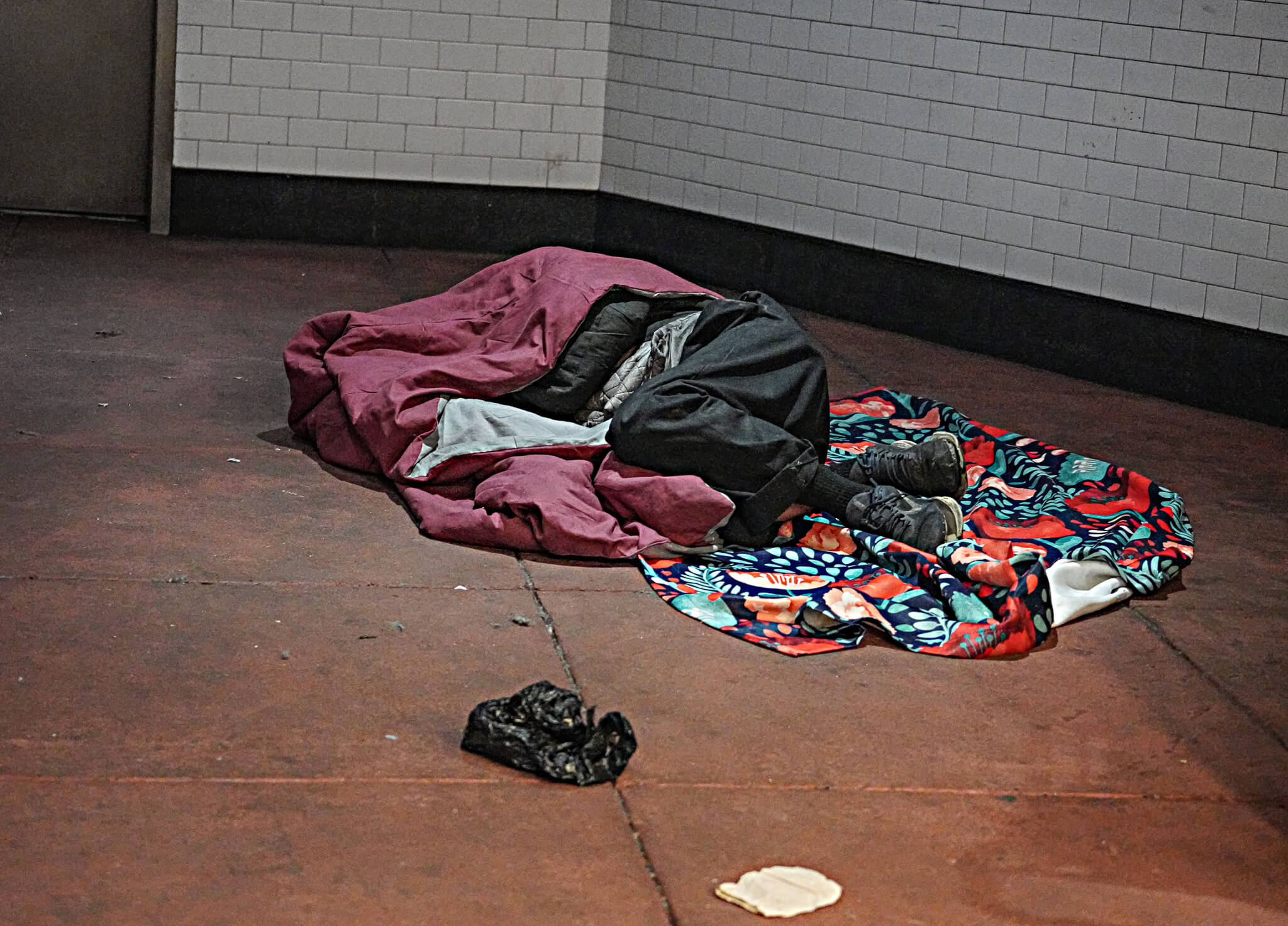
The invisibility extends below ground as much as it does above. With street encampments being torn down (sweeps Mayor Adams claims are meant to get the unhoused the mental health help they so desperately need), many tired and weary unhoused have descended to the subway system in hopes of finding respite. Whether they sleep upright on platform benches or spread on subway car seats, many of the displaced are ignored by the general public both deliberately and inadvertently.
Homeless survivor and unhoused rights advocate Shams DaBaron, known widely as “Da Homeless Hero,” spoke to amNewYork Metro regarding his own experience on the streets and how he was treated.
“One of the most distressing experiences of being homeless and in the streets, is the reality of being invisible to the public,” DaBaron said. “The fact that people can literally see you and walk right by, sometimes, creating distance between you and them, whether in the streets or on the train, it sends a message that you are less than, that you are not even worthy of a smile, a head nod, an acknowledgement of some kind.”
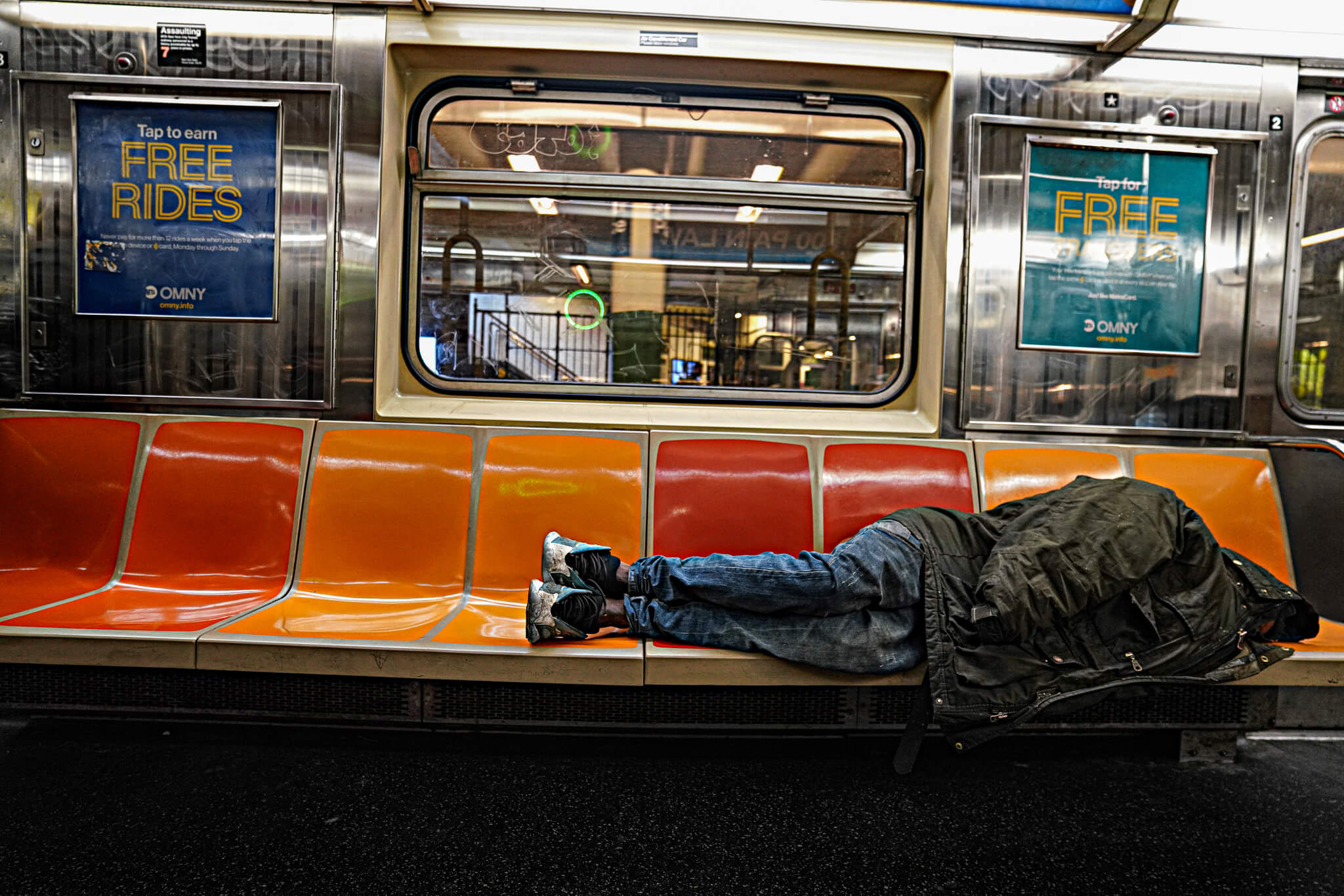
According to DaBaron, being invisible, which is traumatic in and of itself, is coupled with the inability to use a bathroom at will, to maintain hygiene, and access to other basic human needs such as food or water leads to a dehumanizing experience.
“I remember from my own experience of people walking by me while I laid on a bench, slept on a train, and some would not want to sit or stand near me, as if I had some disease. In my mind, I would say: ‘They have no idea that I’m a Hip Hop Pioneer, and have done great things to help people.’ I’m just homeless and in need of a decent place to live,” DaBaron said.
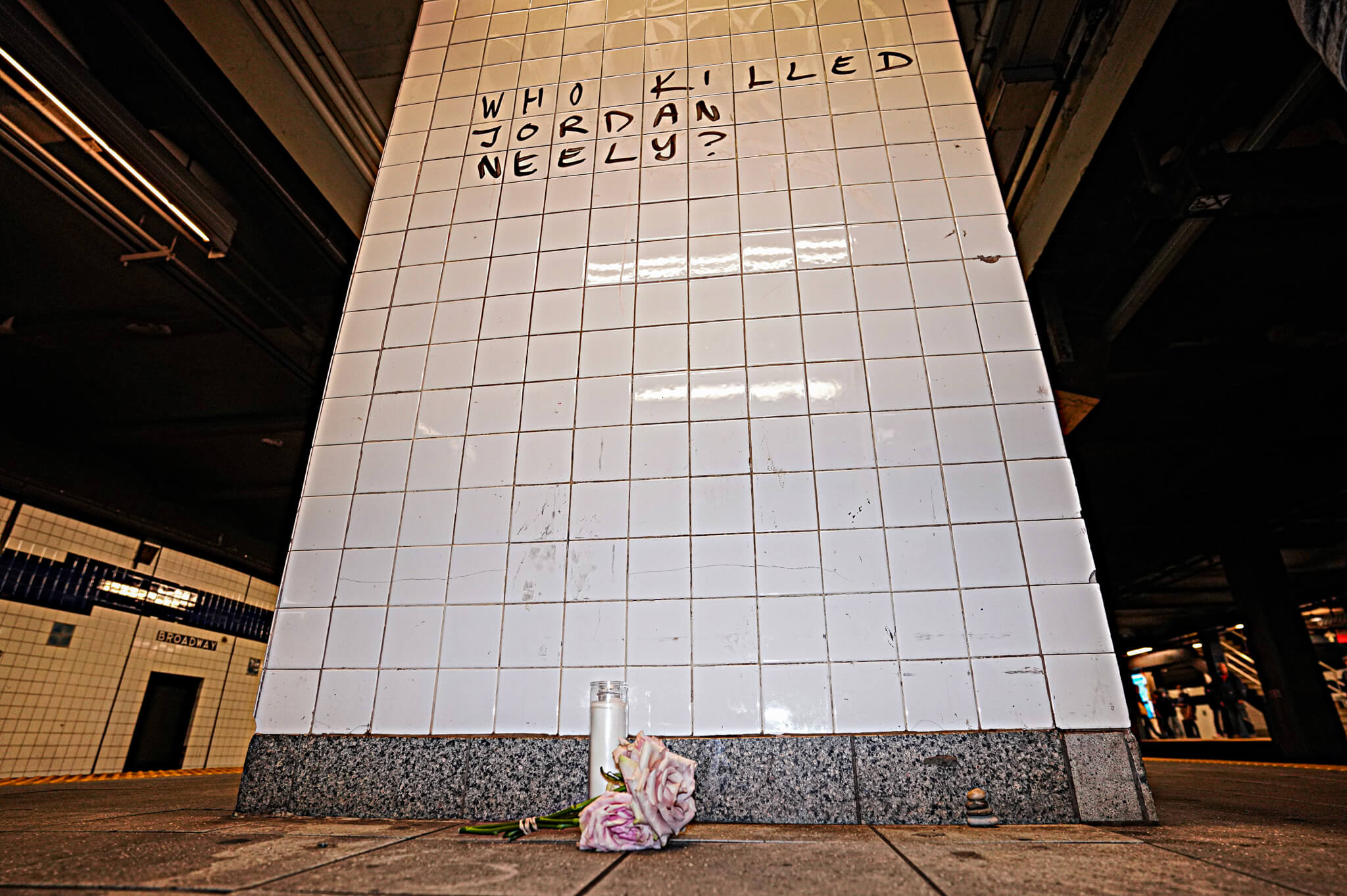
As hundreds have flooded the streets and subway stations demanding justice for Neely this past week, there are many advocates who state that this is a decades-old syndrome caused by the continued failure of the city’s safety net. If these unhoused individuals are not ignored and ostracized, they are demonized, advocates say.
“We are living in a state where a mayor and governor successfully campaigned to keep poor people in jails, flooded our subways with cops, and a white man can kill a Black man and be released without charge,” Jawanza Williams, Director of Organizing at VOCAL-NY said in a statement. “The murder of Jordan Neely is a direct result of the sustained political, systemic abandonment and dehumanization of people experiencing homelessness and mental health complexities, fueled by press coverage that clearly influences policies and emboldens vigilantes. People have been deputized by Mayor Adams’ and Governor Hochul’s hyper-conservative, fear-mongering rhetoric and now a man has been lynched. Neely’s blood is on their hands, and any semblance of justice here requires accountability and a reversal of Adams’ austerity budget and Hochul to stop blocking progressive policy in Albany.”
Mayor Adams recently doubled down on his approach to the unhoused, going so far as to state that people should not be living in the subway.
“People who are dealing with mental health illness should get the help they need and not live on the train, and I am going to continue to push that,” hizzoner said during a press conference earlier this week.
Governor Kathy Hochul also weighed in, conceding to the brutality of the released video depicting Neely’s killing.
“I do want to acknowledge how horrific it was to view a video of Jordan Neely being killed for being a passenger on our subway trains,” Hochul told reporters Thursday. “I’m really pleased that the district attorney is looking into this matter. As I said, there had to be consequences, and so we’ll see how this unfold, but his family deserves justice.”
Read more: How Weddings Became So Expensive Over Time



